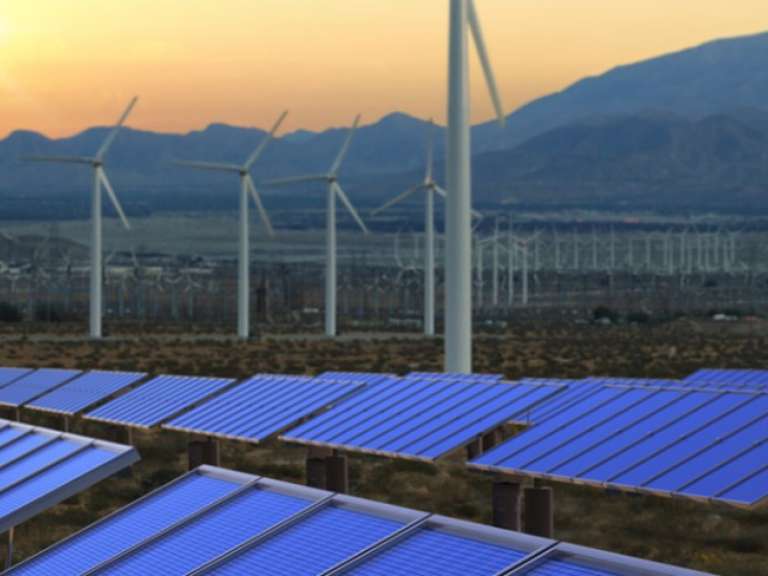5 Energy Industry Trends in 2017
Alex ForbesPower plant managers should keep watch for energy industry trends in 2017: rise of distributed generation, fuel mix changes, digital technology, and more.

With a new president at the helm of a new administration, the coming years will be a big change from the previous ones in the US—and energy will be particularly affected. Here are five energy industry trends in 2017 to watch out for:
It has been creeping up quietly for years: the growth of distributed generation. Just as the shale gas and oil revolution burst onto the scene in the late 2000s, reshaping the North American energy landscape, distributed generation is approaching critical mass.
As more and more industrial, commercial, and even residential consumers install their own generation—be it roof-mounted solar panels, gas-fired combined heat and power (CHP) plants, or even conventional diesel backup generators—they get the opportunity to sell power into the grid. Each source may be small compared to generation by centralized power plants, but, just as a large population is made up of individual people, aggregate enough sources and you have a game-changer. As well as affecting system operators, who have to accommodate this energy in managing power grids, it is an opportunity and a challenge for power plant operators. The Energy Information Administration (EIA) recently began publishing estimates for small-scale solar photovoltaic generation: As of last October, the US had 12.6 GW, and that's just solar.
System operators already grappling with non-dispatchable utility-scale renewable electricity now have to contend with non-dispatchable distributed generation. This puts flexibility at a premium for those generation sources that are dispatchable—so much so that system operators in some states, including Texas and California, have been developing incentives to reward flexible operation. If these prove to be a success, other states are likely to follow. Some policy-makers are facilitating the development of markets around distributed generation, such as New York state with its "Reforming the Energy Vision" (REV) strategy, and others are sure to follow.
Some trends will be affected by the change of administration. However, we are only now starting to see what policies will be implemented and how quickly. In the Annual Energy Outlook (AEO) just published by the EIA, the central reference case project sees consumption remaining relatively flat but the fuel mix changing significantly. Natural gas and renewable energy show strong growth while coal consumption falls as it loses share in electric power. But this assumes implementation of one of President Barack Obama's flagship environmental policies—the Clean Power Plan (CPP). Even before the election, the policy, which would require states to develop plans to reduce carbon dioxide emissions from power plants that burn fossil fuels, was controversial. It is currently pending judicial review. Under a Trump administration, the fate of the CPP is uncertain, as more states are lobbying against it than for it.
Renewable generation capacity accounted for most of 2016's capacity additions, for the third year in a row. Under the new administration, existing renewable energy tax credit incentives are unlikely to be renewed after they expire. Renewables will continue to grow, but less so than was previously anticipated. Some state policies that incentivize renewables will likely remain in place, for example in California and New York, but there is unlikely to be a federal renewables policy under President Trump.
As natural gas prices reached 20-year lows in 2016, gas temporarily overtook coal as the predominant fuel in the US power sector. Prices have been on the rise but — with the new administration expected to pursue policies that boost production of fossil fuels — gas will remain a very competitive fuel, as it has been since the shale gas revolution.
The development of large-scale liquefied natural gas (LNG) exports speaks volumes in this regard. Indeed, the EIA's energy outlook shows that in most projected cases the US will soon become a net energy exporter after being a net energy importer since 1953.
One of the most interesting energy industry trends in 2017 will be in relation to what happens to coal. The EIA projects that its share will remain flat in the absence of the CPP, as some power plants that were expected to close remain open and new ones are built.
Finally, the role of technology in energy should never be underestimated. Digital technology has increasingly been making its way into the power generation, transmission, and distribution sectors, and 2017 could be a year in which its adoption accelerates. This will be driven by its increasing availability and sophistication, as well as by power plant managers' growing awareness of the role it can play in optimizing operations and reducing unplanned outages.
These trends should be seen in the context of the ongoing energy transition to a less carbon-intensive global economy. A key uncertainty for the international community is what will happen now regarding the Paris Agreement on climate change. This agreement took effect in November after having been ratified by sufficient countries, including the US. Keep in mind, future US policy on climate will also have a large impact moving forward.
The falling costs of grid-scale energy storage batteries affect the gas turbine market. What does the effect look like?
The global energy demand is poised for a lot of change in coming decades. Investment in electricity infrastructure must grow as demand rises.
Alongside renewable energy technologies, the role of gas turbines in the 21st century electricity mix is assured.